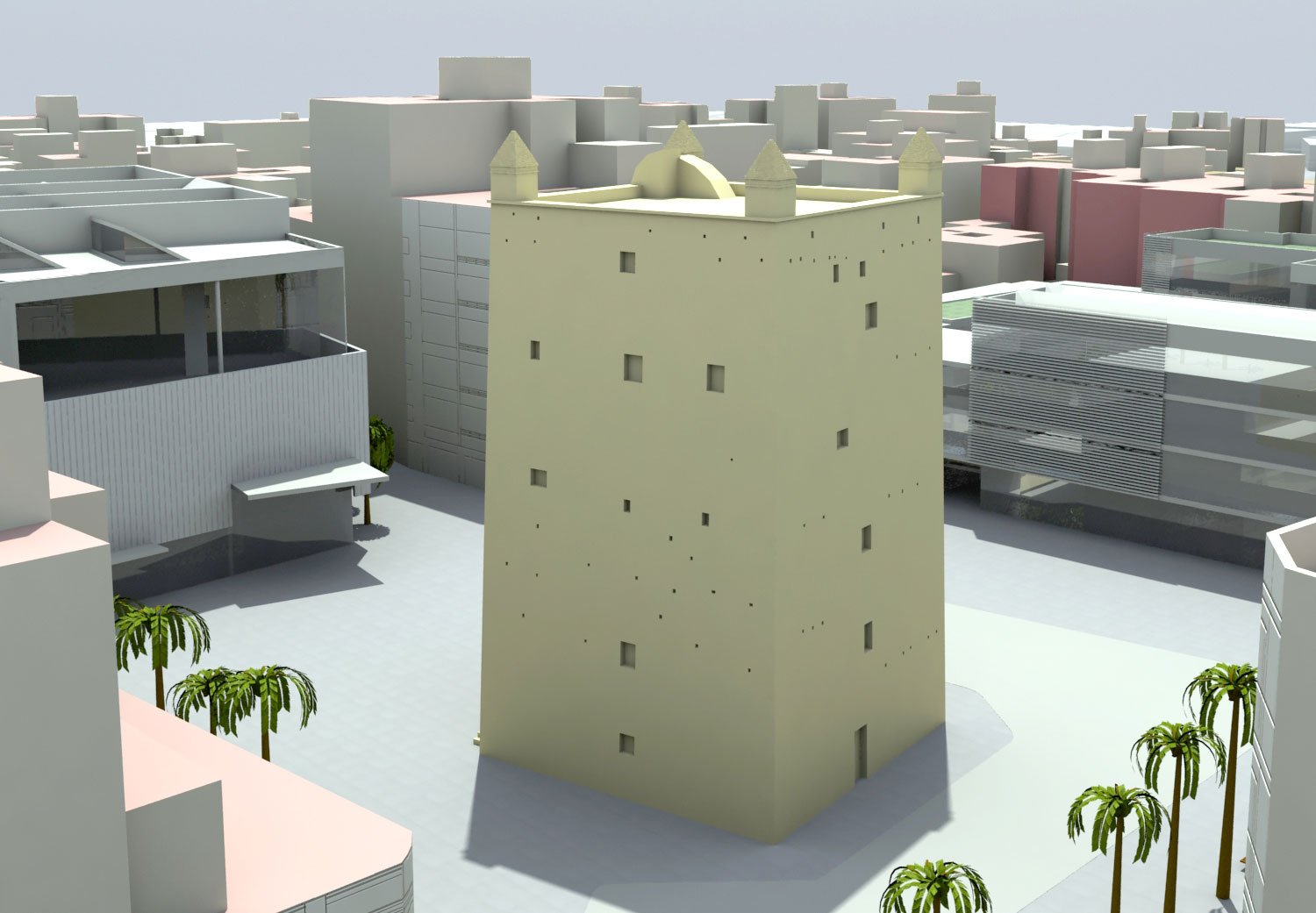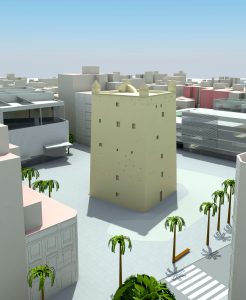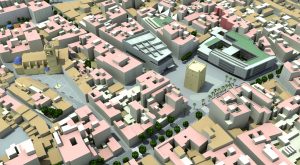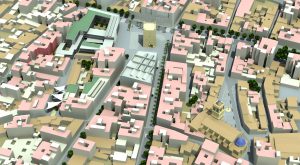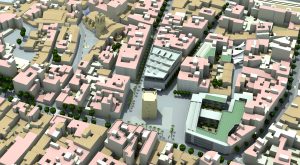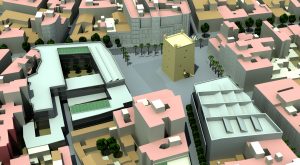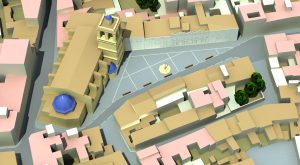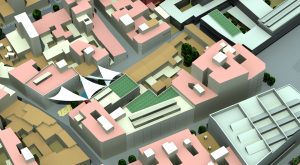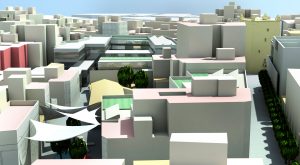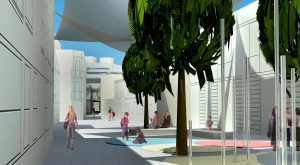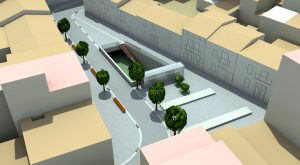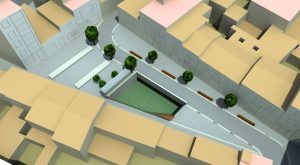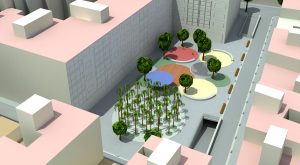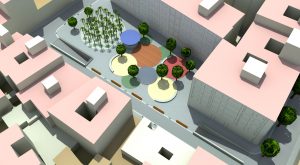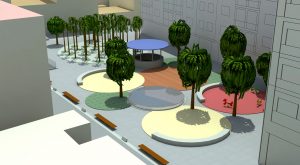DESCRIPTION
There are several circumstances that concur in the need to intervene, with a planning figure of wide scope, in the ordination of the Historic Center of Torrent. From the need to adapt the environment to the legislation on heritage and urban planning, to the realization that certain degradation phenomena of the urban scene were negatively influencing conservation, not only of some prominent elements of the field, but even of their identity. In this way, several factors advised an important intervention promoted by the local administration, such as the one presented with this document.
Paradoxically, about the Historic Center there are few initiatives that have been studied (some of important importance) and it is not the first time in recent times, that an attempt is being made to establish a frame of reference in urban and heritage matters. That is, the town hall has not remained inactive, nor has the area ceased to deserve the attention and intense dedication of many professionals in the field of architecture and urban planning.
From the point of view of the legal framework, the period between 2004 and 2014 was characterized by a constant promulgation of new legal texts on urban planning, environment, landscape, heritage, etc., not always easy to apply or exempt of contradictions It changed most of the regional and state legislative landscape at a pace that made assimilation of the entire new legislative body very difficult. At the time of elaboration of this PEPRI, and after several years of processing, Les Corts were debating the draft of the Land, Urban Planning and Landscape Law (LOTP) project that consolidated, in turn, the entire complex scaffolding Valencian legal, while adapting the legislation to the new state legislation on environmental assessment. Also noteworthy is the approval, at that time, of a state law aimed at promoting rehabilitation, regeneration and urban renewal.
The unquestionable and fortunate increase in social awareness regarding the protection of heritage and the urban scene is currently satisfactorily included in very specific legal provisions, which has led many Spanish municipalities with similar characteristics to Torrent to initiate processes of recovery and management of its historic centers. In this sense, we can say that the urban planning doctrine offers a complete and diverse series of examples in which we can find interesting strategies and with which the possible interest of certain measures can be assessed, while evidencing the delay with which It addresses this issue in Torrent, making it a basic and priority objective of the municipal strategy in the multiple aspects of urban planning, culture, large public facilities, improving the quality of life in a broad sense and social integration.
Finally it is important to point out the economic moment in which this document arises. After a few years of strong growth, economic activity in Spain reflected for more than five years and with special drama, the global crisis that shook the economic foundations of most of the countries and that became evident, with special impact, in our. The situation, within the extreme gravity that it implied in the economic and social aspect, invited to initiate a thorough reflection on basic aspects of what had been the basic pillars of our development. Many things were manifestly improvable and in this sense the Special Plan for the Protection and Interior Reform of the Historic Center of Torrent could become not only a useful and important tool for urban regeneration, but also an example of the new forms of action by the local administration before the citizens, who demanded greater sensitivity and dedication to aspects of a cultured and developed society.
The state legislator rightly points out in the preamble of Law 8/2013, of June 26, on rehabilitation, regeneration and urban renewal, that the Spanish urban tradition “has fundamentally turned to the production of a new city, decomposing the necessary balance between these actions and those others that, oriented towards the existing urban fabrics, allow to intervene intelligently in the cities, trying to generate economic and social well-being and guaranteeing the quality of life to its inhabitants. These other interventions are much more complex, both socially and economically; complexity that is aggravated at the present time as a result of an unfavorable context for public financing, due to budgetary stabilization processes, and also for private financing, due to restrictions on access to credit, arising from the crisis in the sector financial and impoverishment of many families as a result of high levels of unemployment. ”
The set of measures proposed by the PEPRI, responded to the determinations of the current legislation and the objectives with which this document had been raised, in its double condition as Special Protection Plan and Internal Reform Plan. These objectives can be summarized in:
- Incorporation of public participation in the planning and planning process through an exhaustive survey, under scientific parameters, of fundamental aspects for the intervention.
- Delimitation of a protection environment of the BIC and its value enhancement.
- Establishment of the necessary precautions regarding archaeological protection .
- Development of a new and expanded Catalog of Protected Goods and Spaces , with the incorporation of new cataloging criteria and extension of protection to new elements.
- Establishment of new ordinances for the three defined management areas , aimed at the preservation of heritage and the improvement of the architectural quality of the proposals submitted.
- Definition of new ordinances related to signage, terraces on public roads, urbanization and landscaping, etc.
- Incorporation of a graphic proposal for the definition of facades
- Proposal of generic intervention criteria (for minor works), as a complement to the ordinances’ own determinations.
- Incorporation of sustainability criteria in building and urbanization works
- Establishment of harmonization measures between the existing traditional architecture identified by the PEPRI and the new buildings.
- Identification of areas subject to the regime (transitory) of suspension of licenses and identification of buildings in a situation of “out of order “, with specific indication of the type of works allowed in each case.
- Identification of singular environments , within the orderly scope and establishment of the detailed arrangement of the same.
- Delimitation of areas subject to the regime of integrated actions (in this case only one, in Plaza Colón / Major) and incorporation of a management file.
- In the specific case of Plaza Colón / Major , detailed management of the same, with the incorporation of recently executed public actions (tower, moat and new market) and those planned in the medium term (residential building of the South facade )
- Study of mobility in the area and proposal of:
- New pedestrian spaces
- Underground parking
- Cyclabe Network
- Pavement Improvements
- Increase of new green areas and greater presence of vegetation within the scope of study.
- Significance of residential use as the undisputed protagonist of the Historic Center , in intimate relationship with commercial use and hospitality and catering.
- Regulation of commercial uses and avoidance of harmful tendencies for small businesses.
- Social sustainability of the actions foreseen by the Plan and avoidance of the exclusion of groups at risk.
- Orientative economic evaluation of the set of measures (Program of Activities) that, with a holistic perspective, are considered to contribute to improving the quality of urban spaces and, above all, the quality of life in the Historic Center.
DETAILS OF THE PROJECT
Location: Torrent (Valencia, Spain); Promoter: City Council of Torrent; Surface planned in detail: 214,000 m²; Main use: Residential; Processing status: In process


